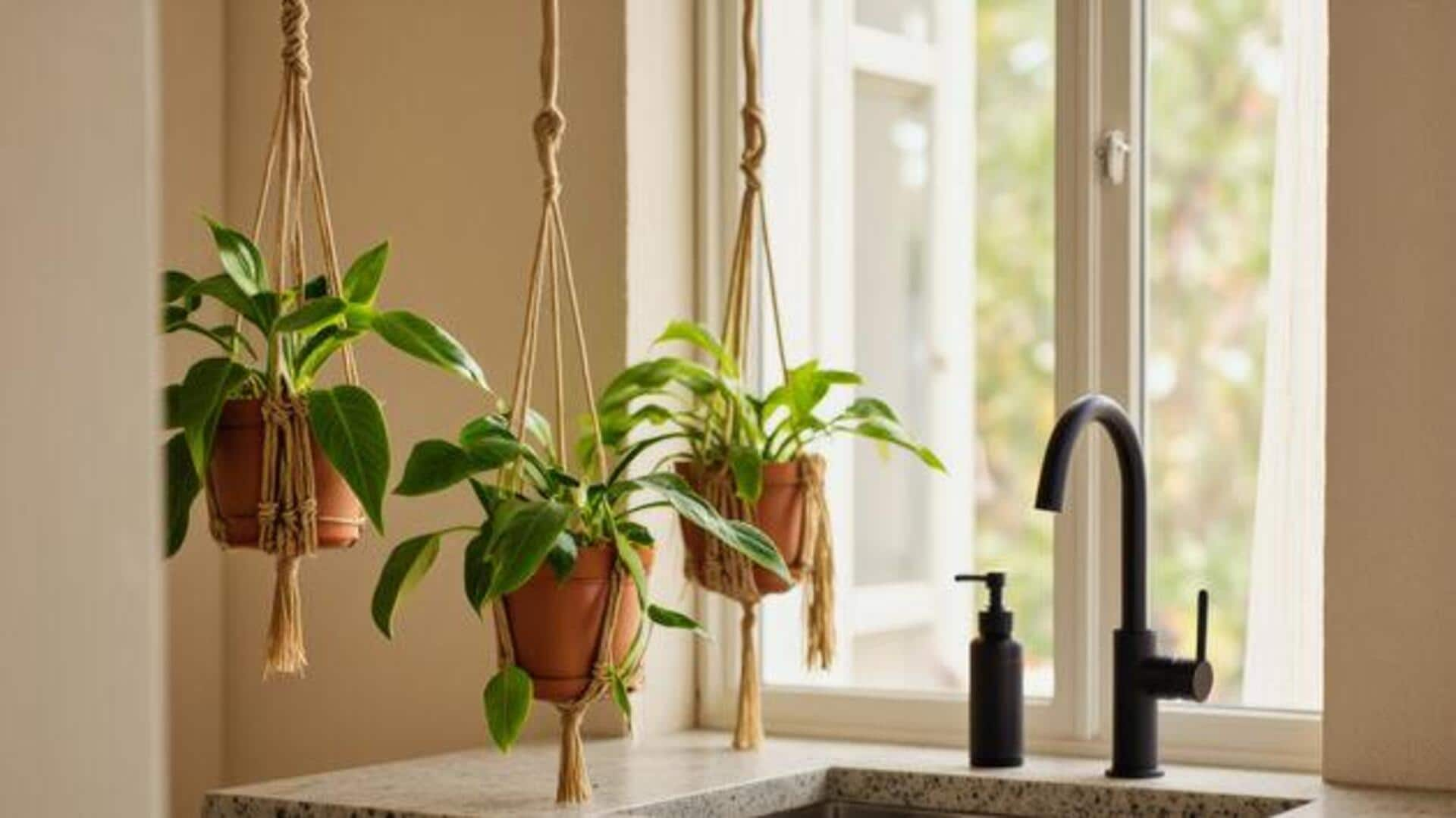
DIY indoor planters: 5 fun and easy ideas
What's the story
Indoor greenery lovers are always on the lookout for creative ways to integrate plants into their homes. Using recycled materials for quirky planters is sustainable, as well as, cost-effective. It minimizes waste and adds a touch of personal decor. By giving everyday things a new life, you can create planters that represent your style and contribute to earth. Here are some DIY recycled planters ideas.
Plastic bottles
Transforming plastic bottles into planters
Plastic bottles are available in plenty and are super versatile. Hence, they're perfect for creating planters. Simply cut the bottle into half and use the bottom part as a container for soil and plants. Ensure to poke holes at the bottom for drainage. You can paint these planters or decorate them with scraps of cloth for some added flair. Hanging them with strings or keeping them on windowsills can elevate indoors' aesthetics.
Tin cans
Using tin cans creatively
Tin cans are super sturdy and easy to work with when it comes to making recycled planters. Just remove labels and clean thoroughly and punch some small holes in the base for drainage. You can paint these cans or wrap them in twine for a rustic look. Grouping a few tin cans together makes for an attractive display on shelves or tables, giving you enough space for herbs or small flowering plants.
Old shoes
Repurposing old shoes as planters
Old shoes make an unconventional yet charming choice for plant containers. Ensure shoes have proper drainage by drilling holes in the sole if needed. Fill them with soil and choose plants that fit well within the shoe's dimensions. Keeping these quirky planters near entryways or patios not only adds character but also shows creativity in recycling household items.
Glass jars
Crafting planters from glass jars
Glass jars provide a transparent choice that allows one to monitor root growth over time, making indoor gardening projects more educational. Clean jars well before use, then fill them with pebbles at the bottom followed by layers of soil suitable for selected plants such as succulents or cacti, which need less watering than other species.
Wooden crates
Utilizing wooden crates as plant holders
Wooden crates make for great bases since they can be adjusted according to size. You can easily fit multiple pots in them and still move around indoors without any hassle. These spaces receive varying amounts of sunlight during the day, allowing you to keep the growing conditions consistent all year round. This way, no matter what the weather's like outside, you can maximize your yield.